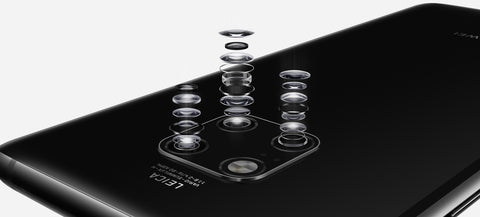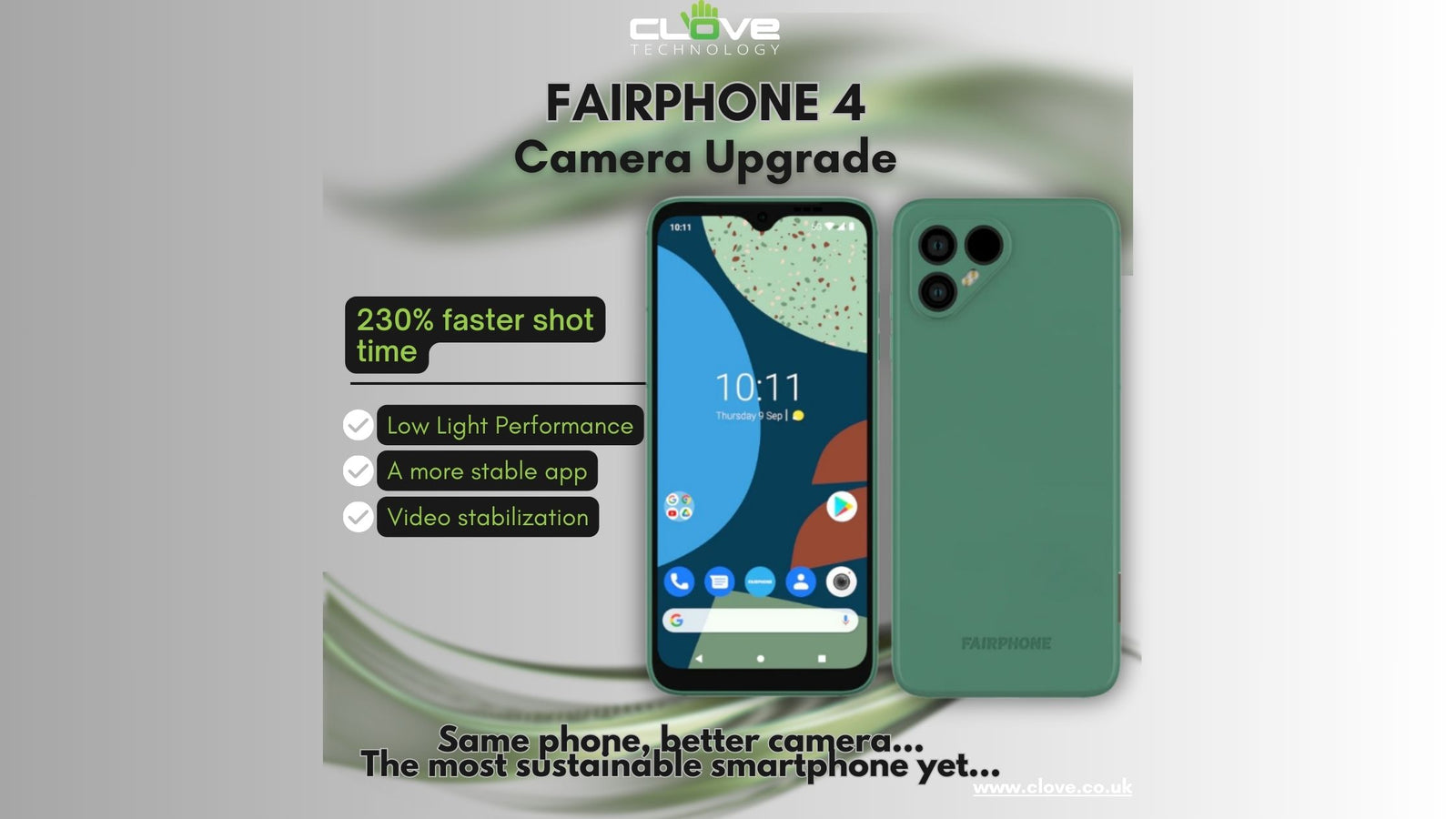The Samsung Galaxy Note 9 and Huawei Mate 20 X have been praised for their speedy processors, top-of-the-class photography skills and stunning displays, but how do the two compare when they’re put head to head?
Display and Design
Now, of course the first thing that is likely to catch your eye with these two devices, is the sheer size of the Huawei Mate 20 X. The Full HD OLED display measures in at a whopping 7.2-inches and so the device is almost more of a phablet than your standard smartphone.
Despite the size, it’s surprisingly comfortable to hold the phone and use it to perform a one-handed operation as well as accessing the rear sensor and side buttons. Huawei has achieved this by minimising the bezels as much as possible, so much so that you can hardly see them at all. The sides really are tiny, whilst a small waterdrop notch minimises the top.
We know that many are not a fan of the notch, but it does allow for a really immersive experience, as the Mate 20 X offers an impressive 87% screen-to-body ratio as well as a wide 18.7:9 aspect ratio.
The display of the Note 9 is smaller at 6.4-inches and has a narrower 18:5 aspect ratio, however it’s certainly not slacking, as the edge-to-edge Infinity Display is crafted with 3D curved glass and really is stunning to look at. Many of you will also have been pleased to see that the device does not come with that infamous notch and instead, all the required front-facing sensors are neatly tucked away in the smallest possible space at the top.
Despite the smaller screen size, the Note 9 actually has a higher pixel resolution at 2960 x 1440 in comparison to the 2244 x 1080-pixel resolution of the Mate 20 X.
Both devices come with a fingerprint sensor to the rear that can easily be accessed whilst using the phone one-handed and come draped in Gorilla Glass to protect from dust and scratches.
The rear of the Mate 20 X has a very unique texture that we personally really like – you can literally hear it as you rub your nail over the back – whilst the design of the Note 9 is a little more understated and classic.
So, if you’re going to make your decision based on the display of each device, then you have a tough call to make. It’s really hard to imagine a more immersive all-round experience than the Mate 20 X, however it may just be a too large for some. It simply comes down to personal preference.
Huawei Mate 20 X:
- Full HD OLED 7.2-inch display
- 87% screen-to-body ratio
- 18.7:9 aspect ratio
- 2244 x 1080-pixel resolution
- Corning Gorilla Glass
Samsung Galaxy Note 9:
- 6.4-inch Infinity Display with 3D Curved Glass
- 18.5 aspect ratio
- 2960 x 1440-pixel resolution
- Corning Gorilla Glass
Camera
Both of these devices are a media lover’s dream and we’re sure you’ll be pleased to hear that the Mate 20 X comes fitted with the same triple lens setup as the Mate 20 Pro.
A number of Clove staff have personally had the Mate 20 Pro for around a month now and the pictures that we have managed to take it on it really are stunning.
The main 40MP sensor is perfect for capturing details of shots, the 20MP ultra-wide-lens comes in for those landscape shots, macro shots and big group pictures, whilst the 8MP telephoto lens is perfect for distant shots.
If you’re no photography pro, well then Huawei’s AI technology will have you covered. This recognises over 1500 scenes automatically and adjusts colours, brightness and contrast accordingly. The results for us have been extraordinary and to look back at these on such a large display is amazing.
In contrast, the Note 9 comes fitted with a dual rear camera that features Samsung’s popular f/1.5 – 2.4 variable aperture technology that allows for great night time photography. This intelligent technology adapts automatically to surroundings, choosing between the two f modes accordingly.
Both lenses are 12MP, and one is a telephoto lens whilst the other is a super-wide-angle for those big group shots.
If selfies are more your thing, well then both devices will more than have you covered, as the Mate 20 X comes with a 24MP front shooter. Beauty mode and portrait mode work really effectively and a wide-angle lens allows everybody to fit into those group selfies.
In comparison, the Note 9 comes with an 8MP front camera with a wide f/1.7 aperture that works really well even in low light situations.
All your smartphone camera needs will be met with these devices.
Huawei Mate 20 X:
- Leica triple lens rear setup
- 40MP main sensor, 20MP ultra-wide-angle lens, 8MP telephoto lens
- AI technology recognises over 1500 scenes
- 24MP front camera
Samsung Galaxy Note 9:
- Dual rear camera
- Both 12MP, one telephoto lens, one super-wide-angle lens
- f/1.5 – f/2.4 variable aperture technology
- 8MP front camera

Other
When we said the Mate 20 X was a media lover’s dream, we weren’t exaggerating. I mean, what is a film or game without accompanying sound? At both ends of Huawei’s device you’ll find dual symmetrical speakers that offer a super high dynamic range of up to 40 decibels so that every sound – no matter how loud – is produced in astounding clarity, richness and depth.
In comparison, the Note 9 caters more to the needs of business professionals and has included Bluetooth capabilities to its much-loved S-Pen that has brought with it a world of possibilities to the device.
If this wasn’t enough, the Note 9 is the first of Samsung’s devices to have its DeX system incorporated directly into it which allows you to transform your phone into a desktop like environment quickly and efficiently.
Huawei Mate 20 X:
- Dual Symmetrical Speakers
- Dynamic range of up to 40 decibels
Samsung Galaxy Note 9:
- Bluetooth-enabled S-Pen
- DeX System incorporated

Performance
Now again, when it comes to performance, you won’t find any problems with these two.
The Mate 20 X comes with a HiSilicon Kirin 980 octa-core processor which has worked fantastically quickly on our Mate 20 Pro’s and seems perfect for gamers with no problems with lag or frame rate issues.
The device is powered by GPU Turbo 2.0 technology in which hardware and software work together to accelerate speed and power for faster, smoother and more stable gaming, even in graphically intense games.
If things do become intense, the Mate 20 X is fitted with Huawei SuperCool, the first liquid cooling system that conducts heat away from the core to keep the device cool. We probably haven’t had the chance to do enough serious gaming on the device to make a judgement on this just yet, but we’ve encountered no problems whatsoever thus far.
Alongside this, the device comes with an industry leading 5000mAh battery which is considerably larger than the 4000mAh offering of the Samsung Galaxy Note 9. That said, the Note 9 is available with both 128GB and 512GB internal storage as well as microSD support, whilst the Huawei Mate 20 X comes with only 128GB of internal memory.
Huawei Mate 20 X:
- HiSilicon Kirin 980 octa-core processor
- GPU Turbo 2.0 Technology
- Huawei SuperCool – liquid cooling system
- 5000mAh battery
Samsung Galaxy Note 9:
- Qualcomm Snapdragon 845
- 4000mAh battery
- 128GB and 512GB memory options
- microSD support
Result?
So I suppose the question is this; what do you want the device for? Work or play?
If you’re using your phone to take pictures, watch videos and game then the Huawei Mate 20 X is definitely for you. The display really is fantastic and pictures just cannot do it justice.
In comparison, if you’re using your phone for business means, then the Note 9 probably edges it, with it’s Bluetooth S-Pen and incorporated DeX system.
In comparison, the Huawei Mate 20 X is now available for pre-order as a 128GB Dual SIM variant in Midnight Blue for £799.99.





